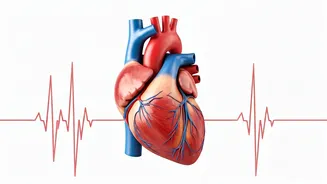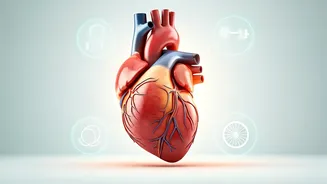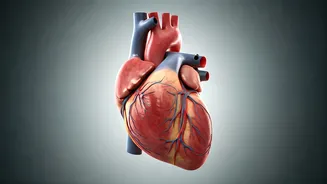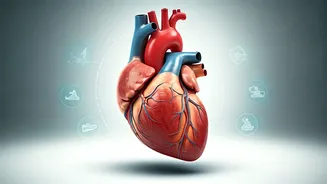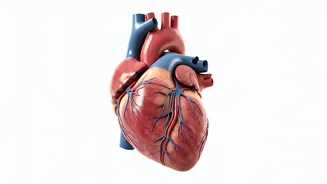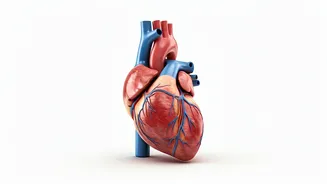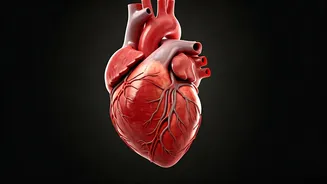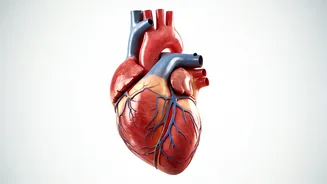Gentle Yoga Power
Yoga, often perceived as a tranquil practice, packs a powerful punch for your cardiovascular well-being. This ancient discipline marries physical postures
with controlled breathing, forming a dynamic workout that enhances both flexibility and heart health. The beauty of yoga lies in its adaptability; it can be modified to suit any fitness level, making it accessible for everyone. Regular yoga practice can reduce blood pressure and improve overall heart function. The various poses and stretches promote circulation, supporting the efficient delivery of oxygen throughout the body. Furthermore, the mindful approach inherent in yoga aids in managing stress, which is a significant factor in heart health. Start with basic poses and gradually increase the intensity as you become more comfortable, tailoring the practice to suit your needs and preferences for optimal impact on your heart.
Brisk Walking Benefits
Brisk walking is a simple yet extremely effective exercise for maintaining a healthy heart. It's a classic for a reason. Taking a brisk walk elevates your heart rate, providing a moderate cardiovascular workout without straining your joints. You don't need fancy equipment or a gym membership; all you need is a comfortable pair of shoes and a safe place to walk. Aim for at least 30 minutes of brisk walking most days of the week. This activity improves blood circulation, strengthens your heart muscle, and helps maintain a healthy weight. The simplicity of brisk walking makes it easy to integrate into your daily routine, whether it's during your lunch break or as a leisurely stroll in the evening. Consistent walking can significantly reduce your risk of heart disease and improve your overall quality of life.
Tai Chi's Calm Impact
Tai Chi, often associated with its slow, controlled movements, offers a gentle yet profound approach to heart health. This practice combines physical postures with focused breathing and mental concentration, creating a harmonious workout. The controlled movements gently elevate your heart rate, contributing to improved cardiovascular function. The mindful aspect of Tai Chi helps reduce stress, a key factor in heart health. Moreover, Tai Chi's emphasis on balance and coordination also enhances overall physical fitness. Practicing Tai Chi can improve blood circulation, strengthen muscles, and increase flexibility, leading to a healthier heart. Its meditative nature promotes relaxation, which can further benefit your cardiovascular system. Integrating Tai Chi into your routine can be an excellent way to care for your heart.
Dancing for Heart
Dancing is a surprisingly effective and enjoyable way to boost heart health. From lively salsa to gentle ballroom, dancing provides a cardiovascular workout that can be easily customized to suit your preferences and fitness levels. It's an accessible exercise, requiring no special equipment, just music and a willingness to move. Dancing elevates your heart rate, improves blood flow, and strengthens the heart muscle. It also helps burn calories, aiding in weight management, a critical factor for heart health. Regular dancing can reduce the risk of heart disease and improve overall fitness. The social aspect of dancing further enhances its appeal, making it a fun activity to share with friends and family. Incorporate dancing into your routine for a fun and heart-healthy lifestyle.
Cycling's Cardiovascular Boost
Cycling, whether indoors or outdoors, is an excellent exercise for improving your heart health. It is a low-impact activity that offers a great cardiovascular workout. Cycling elevates your heart rate, improving blood circulation, and strengthening your heart muscle, without putting excessive stress on your joints. Indoor cycling classes provide a structured environment with adjustable resistance levels, catering to varied fitness levels. Outdoor cycling allows you to enjoy nature while reaping the heart-healthy benefits. Both forms of cycling help burn calories, assisting in weight management, a significant factor in preventing heart disease. Consistent cycling can help lower blood pressure, improve cholesterol levels, and reduce the risk of heart-related ailments. Integrating cycling into your lifestyle offers a fun and effective way to care for your heart.
Low-Impact Bodyweight Circuit
A low-impact bodyweight circuit provides a convenient and effective way to enhance heart health without needing any equipment or a gym. This type of circuit involves a series of exercises performed with your body weight, such as modified push-ups, squats, and planks. This approach allows you to tailor the intensity to suit your fitness level. The repetitive nature of the circuit boosts your heart rate, providing a cardiovascular workout that enhances blood flow and strengthens the heart muscle. It's an excellent way to improve both your endurance and overall fitness. These exercises are gentle on your joints, making them suitable for people of all ages and fitness levels. Regular practice can help improve your heart health and lower the risk of cardiovascular ailments. Making time for a bodyweight circuit can be an excellent step toward a healthier lifestyle.
Consistency Is Key
The journey to a healthier heart involves consistent exercise. Maintaining a regular exercise routine is essential for realizing and maintaining the benefits of any activity, including the low-impact exercises mentioned. Establishing a routine helps make exercise a habit rather than a chore. It's important to set realistic goals, start slowly, and gradually increase the intensity and duration of your workouts. Making exercise a part of your daily or weekly schedule is a key factor. Whether you choose yoga, brisk walking, Tai Chi, dancing, cycling, or bodyweight circuits, consistency is vital. Regular physical activity reduces the risk of heart disease, improves blood circulation, and enhances overall well-being. The key to staying consistent is finding activities you enjoy, that you can realistically fit into your lifestyle. By doing so, you'll not only care for your heart but also improve your overall quality of life.
